Improve your filmmaking approach and technique with these notable run-and-gun style filming practices.
In the wonderful world of documentary filmmaking, you don’t always have the luxury of preparing shot lists and blocking scenes. For example, my current documentary project requires a lot of run-and-gun style shooting. This cinema vérité style is probably my favorite type of filmmaking, as you never know what can happen and constantly have to be on your toes. The term means “cinema of truth” and it refers to a documentary style without adornment or artificiality — simply capturing reality as it unfolds.
In this tutorial let’s take a practical approach to shooting documentaries sans tripod. I’ll go over a few important practices to follow that’ll help you become an excellent run-and-gun shooter.
Pick Your Specific Shooting Style
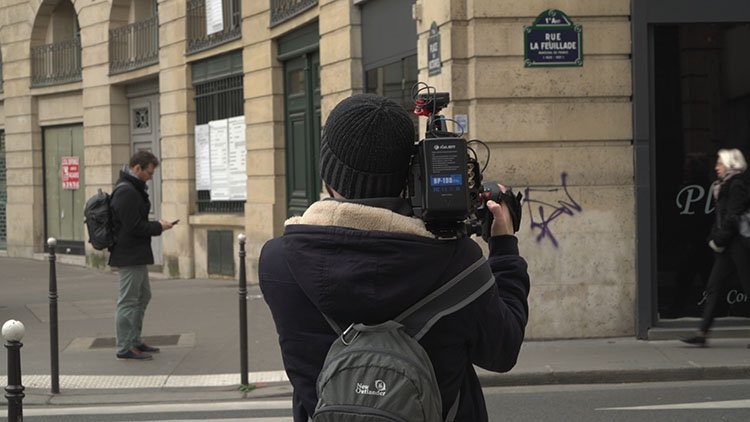
There are a lot of different flavors of the run-and-gun method, including Vérité and fly-on-the-wall. It’s important to spend some time in pre-production to think about your visual approach. Again, you might not have the luxury of creating a shot list or blocking out scenes, but you can still take time to think about your shooting techniques.
For example, do you want your documentary subjects to acknowledge the camera’s presence and interact with you? Or would you rather silently follow your subject and document events as they unfold? Both of these approaches are interesting, but will give very different results. I often do a mixture of these styles, depending on what the situation calls for. Test out these techniques to see what feels right for your particular project.
Choose an Event or Action to Film
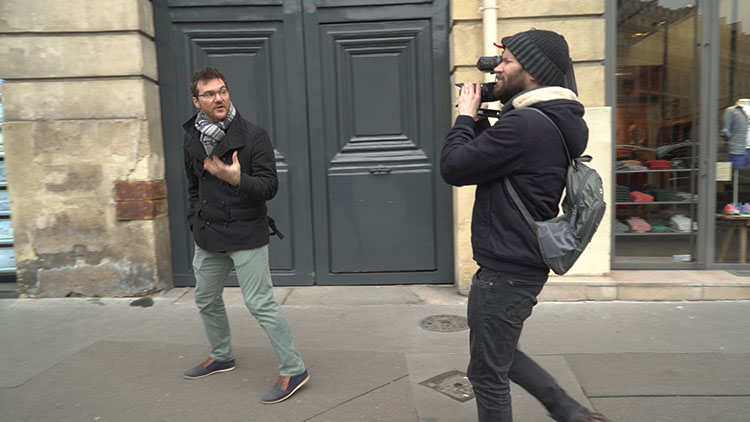
Even if I choose to approach my documentary fly-on-the-wall style, I’ll still want to choose a reason for each specific shoot. Have shots and sequences in mind that you’d like to capture, then leave the situation open for something interesting to happen.
For this shoot, I’m profiling a tour guide in Paris. While a sit-down talking head might be a boring approach, following my subject around aimlessly could be just as boring to the viewer. For this particular scene, my subject is doing research for a tour he’s preparing. So, I’ll have him exploring a neighborhood in Paris, taking notes as he moves through different areas of the city, and describing what he sees. I can capture his reaction to finding an interesting spot with a neighborhood, and even ask him questions to grab some soundbites about his feelings, which will be very fresh and genuine.
Master Your Tools
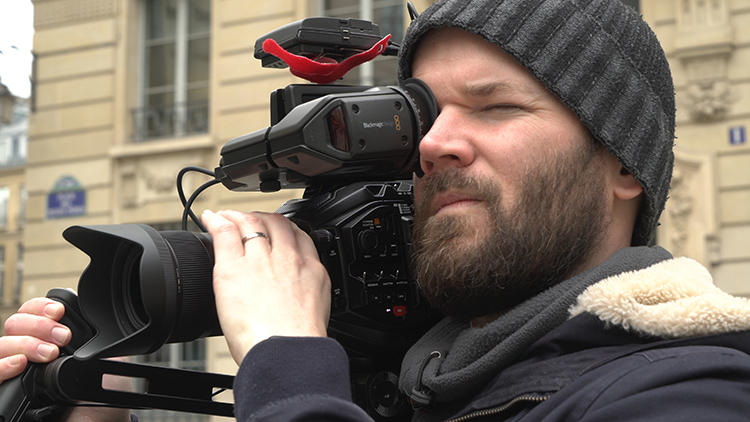
Practice indeed makes perfect. Knowing how to use your equipment is incredibly important. Even more so when your job is to document moments in real time, with no second takes. The last thing you want is to miss a shot due to operator error. The best way to avoid this is to simply go out and shoot with your equipment. Be extra careful if you’re working with rentals.
You’ll get to know your gear pretty well after a full day of running and gunning. Make your mistakes before the important events start to unfold. Ideally, you’ll want to have all of your camera buttons memorized, and have easy access to them without having to look. The equipment should feel like an extension of your body.
Audio Is Everything
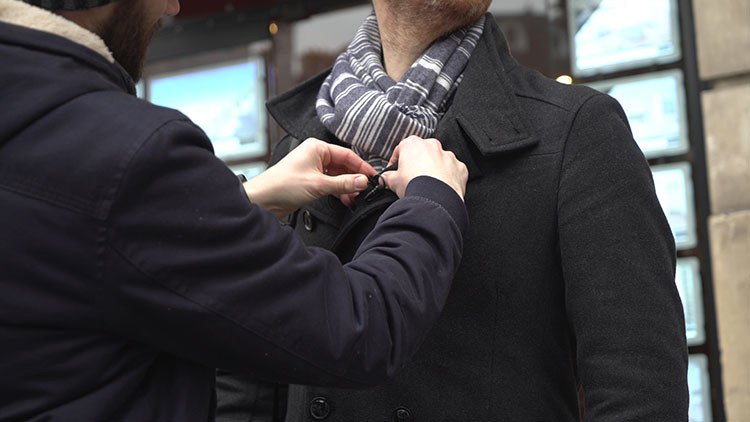
In my experience, audio is almost always the most difficult and troublesome aspect of documentary filmmaking. For this reason, it’s good to have redundancy. For this shoot, I have a wireless lavalier on my subject, and I’m recording natural sound via the camera’s internal microphone. I just need to make sure that I have each input recorded to separate channels, so I can then split them in post for mixing.
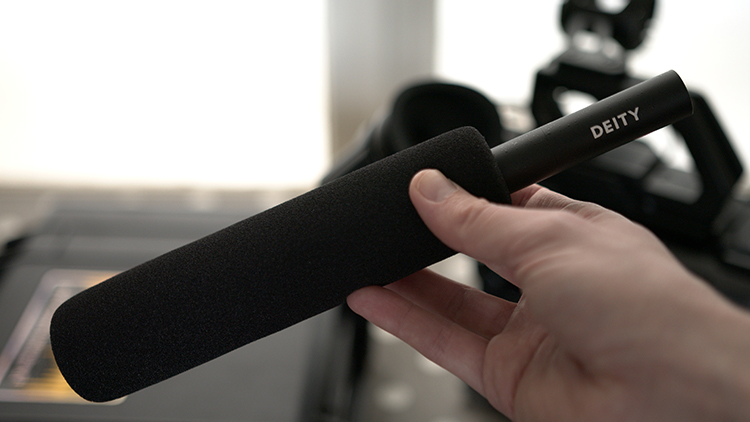
Again, redundancy is especially important in these situations, where you only have one take to capture the moment. An even better setup would be an on-camera shotgun mic and a lavalier on my subject. This can be a wireless lav or even a small audio recorder (in the subject’s pocket) with a wired lav. If you’re staying close to your subject, a good shotgun mic mounted on the top of your camera can capture both voice and the surrounding ambiance.
Gear Up and Accessorize
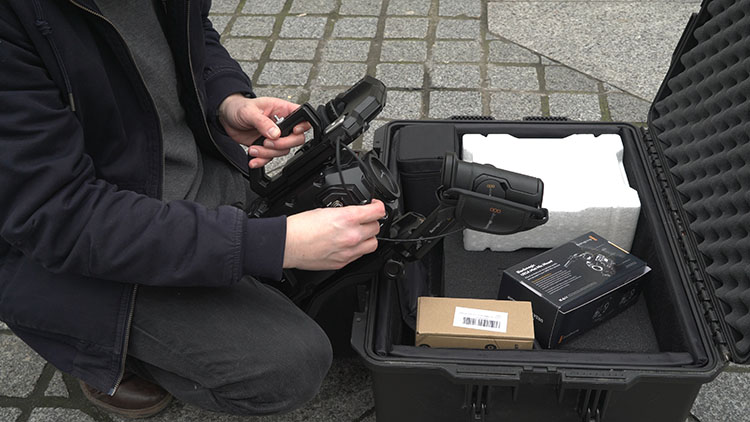
Ergonomics is a very important part of your documentary setup. I want my rig to be comfortable, with all of the controls easily accessible. Some important camera features include a wide-angle lens, an internal ND filter, plenty of mounting options, and shooting presets. I’m using peaking and magnification to monitor my focus, and zebra lines and a histogram to keep the exposure in check.
To get my rig ready to run-and-gun, I’ve accessorized. I have a shoulder mount kit with a top handle, and a high-end viewfinder. I also have plenty of storage space on media cards, as well as enough V-mount batteries to get me through the day.
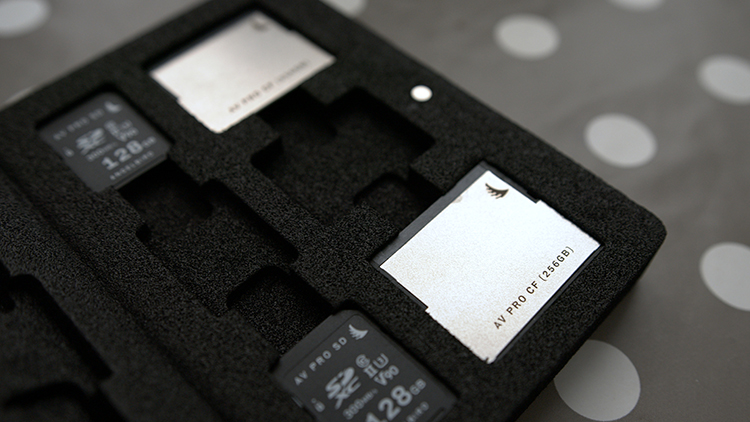
Here’s my full documentary rig:
- Blackmagic URSA Mini Pro G2
- Deity S-Mic 2 Shotgun
- Deity Wireless Lav
- Angelbird Media Cards
- Sigma 18-35mm f/1.8
- Blackmagic Shoulder Mount Kit
- Blackmagic Viewfinder
I also keep a few release forms and a pen on me at all times. If you forget to get someone’s signature, you might have to blur out their faces later. Other great run-and-gun accessories include monopods or an Easy Rig.
Prep for Post
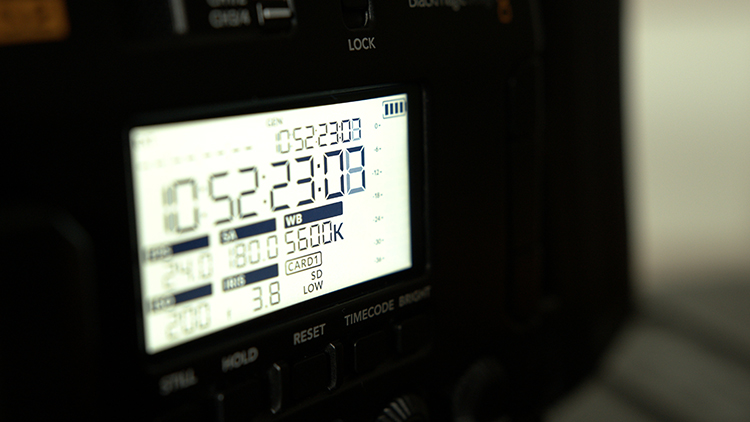
Shooting a documentary can require capturing a lot of footage, so I’ll want to select a format and codec that provides a file size functional for my workflow. I’m shooting in Blackmagic RAW on the URSA Mini Pro, which can require a good amount of storage space, depending on the compression ratio I select. This can get expensive after just a few days of shooting. Depending on my budget, I’ll have to find a format with a good balance of quality and file size.
Another problem I’ll encounter is managing and referencing the footage. I’ll need to find a file-naming scheme that allows me to quickly find files during post. For this project, I’ll use dates for file names, and record with time of day timecode. At the end of each shoot day, I’ll make notes regarding what happened for the day. I can then later reference what happened at particular times for that day.
Interested in the tracks used in the making of this video tutorial?
- “French Voyage” by Cymatix
- “Different Technology” by Ulas Pakkan
- “Dancing With the Moon” by Ulas Pakkan
Cover image via Alzbeta.
Learn more about filmmaking and video gear here:
- Guerrilla Filmmaking: How We Shot A Short Film In Under 3 Hours
- The 7 Best Free Filmmaking Resources for Video and Motion Graphics
- Filmmaking Roundup: The Best Free Video Editing Programs
- What You Should Include in a Backup Filmmaking Kit
- 7 Filmmaking Cameras You Can Get for Under $1,000




